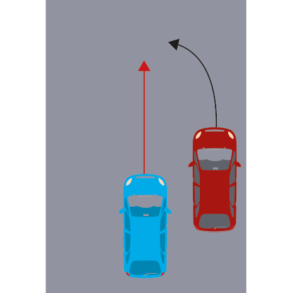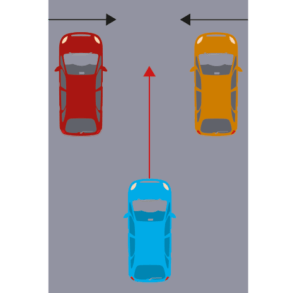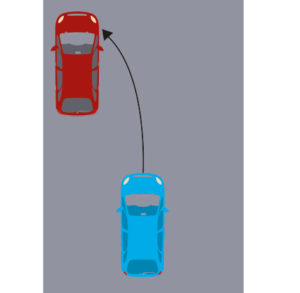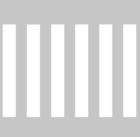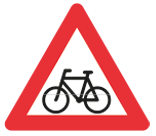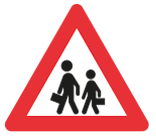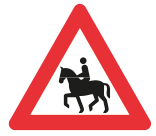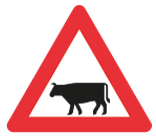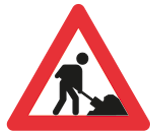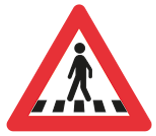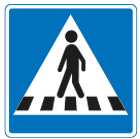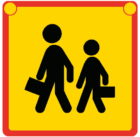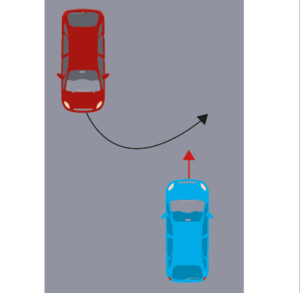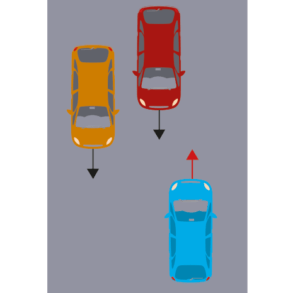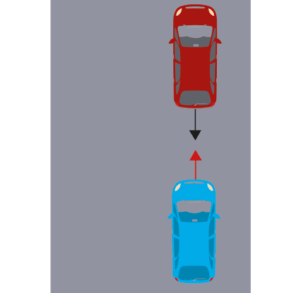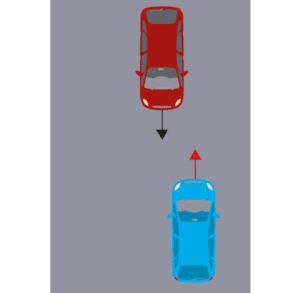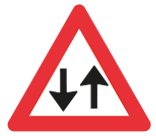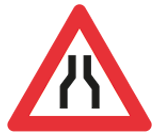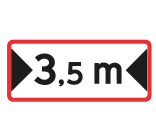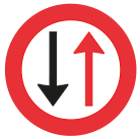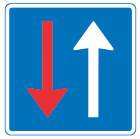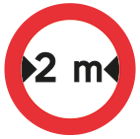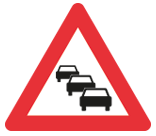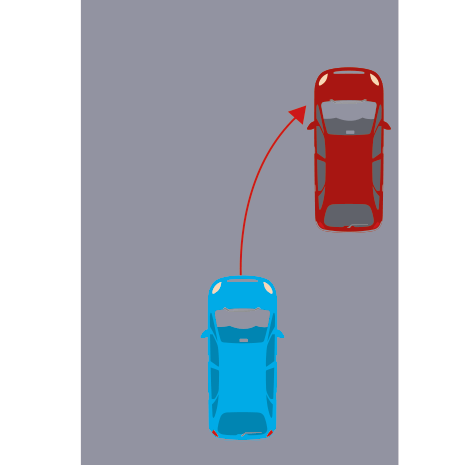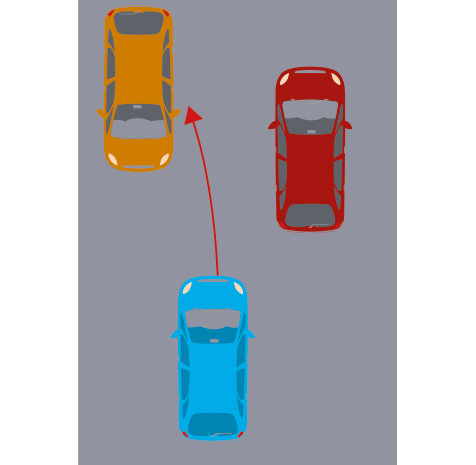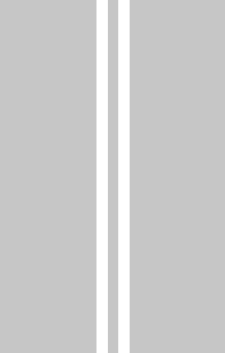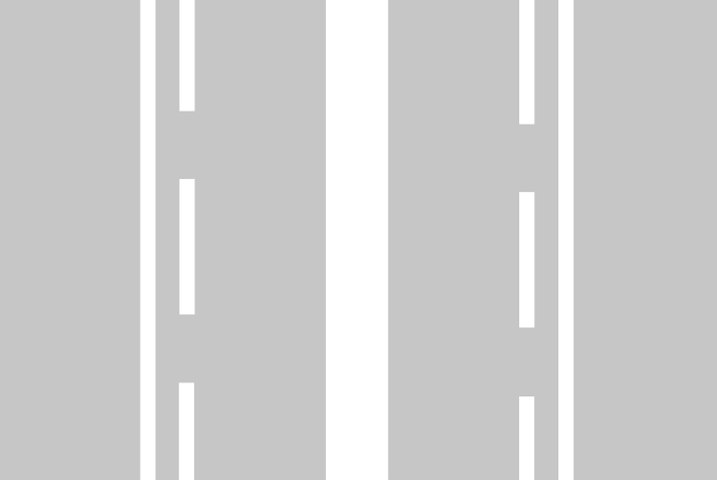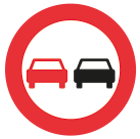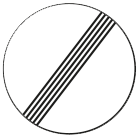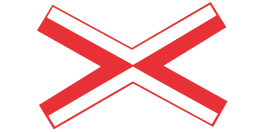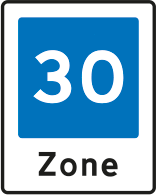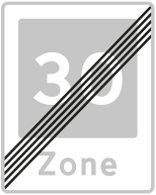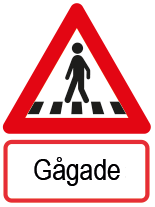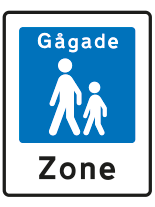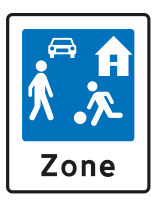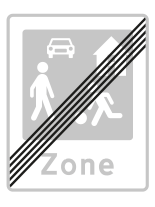car
Driving school
theory book
to category B
Sections 7.6 - 7.10: Mmanoeuvres in lighter traffic
6. Driving past parked vehicles and pedestrians etc.
Risks and accidents
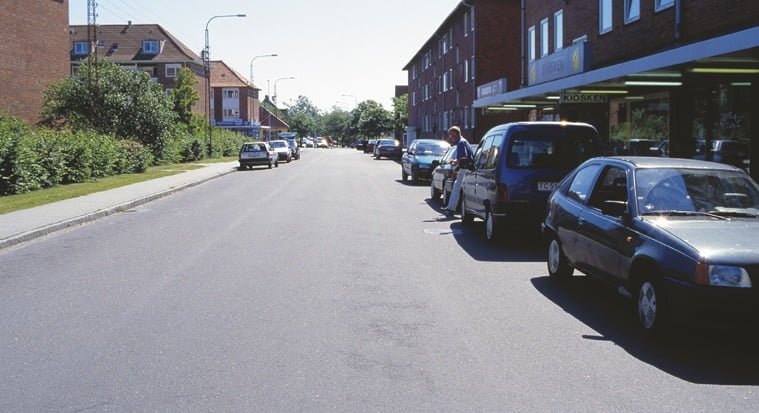
Younger children, and often older ones too, don't realise the danger of stepping out from behind a stopped car or bus.
Risky situations when driving past stationary vehicles, pedestrians and others arise mainly due to insufficient distance to, for example, a stationary car. If you pass too close, the chances of avoiding an accident are very small.
Children are impulsive and if they are playing, they forget about road rules. Children and elderly people are often involved in overtaking accidents.
The tendency of mopeds and bicycles to sway can also be dangerous. In accidents involving overtaking, it is often the stopped vehicle that is hit. As a rule
it's on the right side, but it can also occur on the left side. Many crashes happen when a car or two-wheeled vehicle sets off from the side of the road, precisely because
another road user drives past.
Orientation and manoeuvring
You need to learn to recognise and manage the following hazards when driving past stationary vehicles, pedestrians and others:
- Reduced visibility due to stopped vehicle.
- Start-up for moped riders and motorcyclists.
- Children by the road.
- Horses with riders, cattle or other animals on the road.
- Roadworks.
- Pedestrians or other road users entering a pedestrian crossing.
- School patrol.
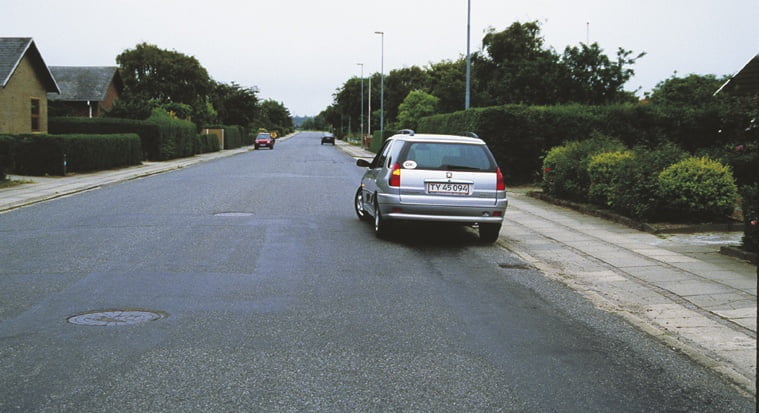
Look for signs that a stationary vehicle is about to start moving, such as people in the car, a switched-on indicator or stop light, or smoke from the exhaust pipe.
How to drive past parked vehicles, pedestrians and others:
- Check in good time whether it is possible to pass and orientate yourself as you would when changing lanes. Slow down or stop if necessary to ensure you can orientate yourself sufficiently.
- Look for oncoming traffic. If the road is narrow, you may want to let them pass before moving on.
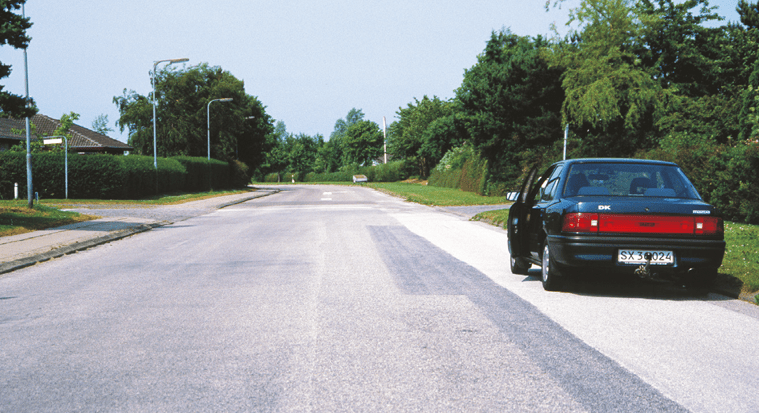
Signs that passengers or pedestrians are about to enter the carriageway, such as a car door being opened or a stopped bus, cyclist or moped rider about to cross the carriageway or feet visible under the car, can also be a danger sign.
- Constantly look for sudden obstacles - without locking your gaze on anything.
- Drive at a suitably slow speed towards a pedestrian crossing so that pedestrians in the crosswalk or about to enter it can see that you will stop.
- Drive at an appropriately low speed in front of school crossing patrols and stop if a school crossing patrol is directing students across the road.
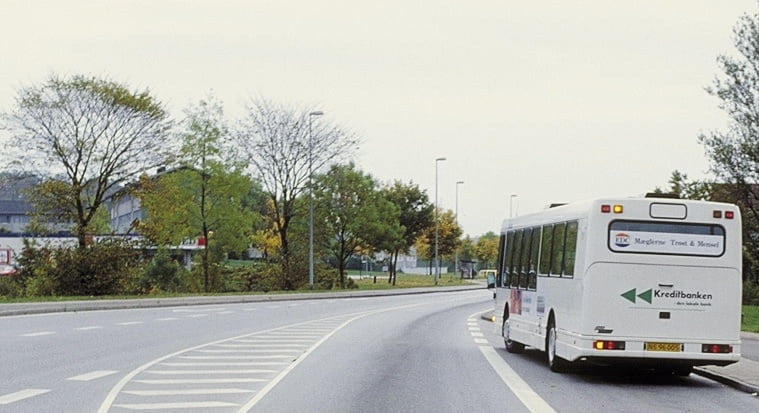
You must stop if necessary to make way for a bus that, in densely populated areas, is signalling with its turn signal to start from a bus stop.
- Reduce your speed when passing pedestrians in bad conditions to minimise the risk of hitting them.
- Pay special attention when approaching school crossing patrols and pedestrian crossings.
- Keep your distance from what you pass.
- Never drive faster than conditions allow and be ready to brake.
- Orient yourself backwards using mirrors and by turning your head before pulling to the side again.
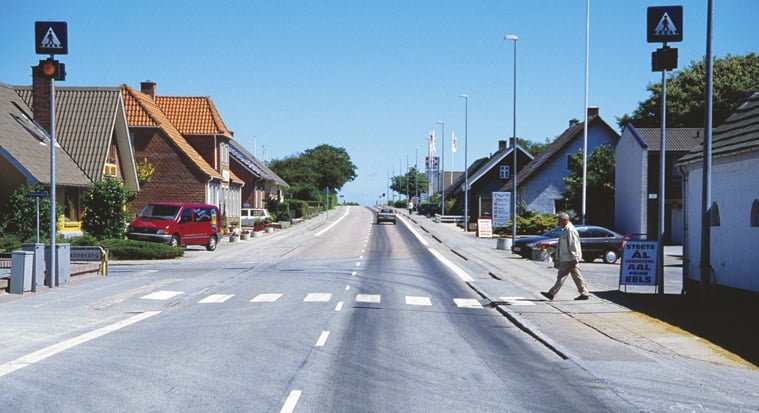
The pedestrian crossing warns you that there may be pedestrians on the carriageway and you should pay special attention to the fact that there may also be people heading into the crossing.
7. Meeting
Risks and accidents
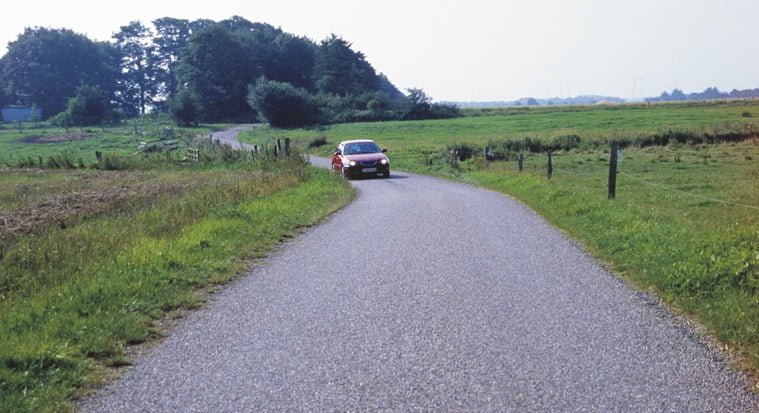
On narrow roads, you may encounter obstacles in your lane. For example, oncoming traffic crossing the centre of the road. Be prepared to slow down and keep to the far right.
Young drivers are involved in many accidents when meeting, usually on narrow, two-lane roads.
There are also a number of collisions with oncoming cars overtaking, turning or reversing, as well as with pedestrians on the side of the road.
Accidents typically involve cars and vans, but also a relatively large number of lorries and some two-wheeled vehicles.
§ On a three-lane road, do not drive in the leftmost lane unless the traffic is one-way.
Orientation and manoeuvring
You need to learn how to recognise and manage the following meeting hazards:
- Obstacles ahead in your own lane.
- Road conditions that may cause oncoming drivers to cross the centre of the road, for example, a narrow road without striping, bends, potholes or slippery and greasy roads or hills where visibility conditions may make it difficult to assess the position of oncoming drivers.
- Oncoming drivers with steering characteristics that make them tend to oversteer the centre of the road, especially on bends or narrow roads. Examples include large, heavy buses and lorries, motorcycles or vehicles with a trailer.
- Weather conditions, such as crosswinds, that can push you and those you meet off course.
- Encounters with large lorries that can cause turbulence and push others off course. Here, "soft" road users are especially at risk.
Meeting - here's how:
- Be aware of oncoming traffic and any obstacles in good time and slow down if it makes the situation easier, keep to the right while being considerate of other road users on the side of the road.
- Stay behind pedestrians, cyclists and moped riders, or stop if necessary, for example because there are obstacles ahead in your half of the carriageway.
- Don't look at the oncoming vehicle for too long, but keep your eyes on the free lane.
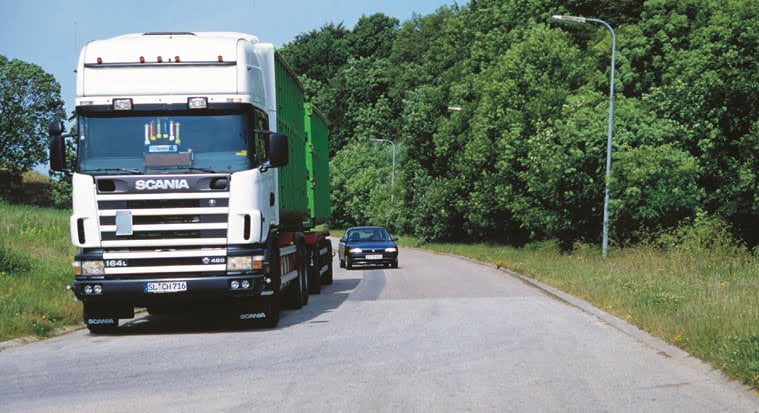
Be aware of traffic conditions that may cause oncoming traffic to cross the centre of the road, such as a stopped vehicle on the left-hand side, or heavy traffic where the vehicle behind will overtake.
Signalling
- Lane signal. The red cross means that driving in the lane is prohibited. A yellow, flashing diagonal arrow indicates that you should move over to the lane the arrow is pointing to as soon as possible. A green arrow indicates that driving in the lane is permitted in that direction. If the signal changes to a red intersection, you must change lanes. If this is not possible, stop.
8. Driving in front of or behind others
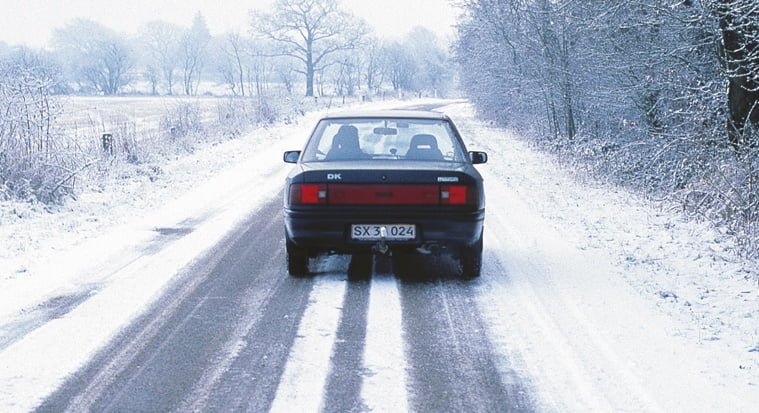
Also pay attention to weather conditions that reduce visibility or increase braking distance, such as fog, heavy rain, snow, or slippery and oily conditions.
You should therefore be aware that the braking distance depends, among other things, on how hard you press the brake pedal and that the braking distance will quadruple if you double the speed. The braking distance is the distance the car travels from the start of braking until the car comes to a standstill.
How to drive in front of others
- Check your mirrors regularly to stay informed about those travelling behind you.
- Judge if the distance is safe enough.
- Assess whether your speed is appropriate and not excessively low.
- If you can judge that the driver behind you intends to overtake, you may be able to slow down to facilitate overtaking.
- If possible, avoid braking or slowing down suddenly - signal with your stop light well in advance of stopping or unexpectedly slowing down. of speed to guide approaching vehicles behind you.
- Keep as far to the right as possible and don't speed up if the car behind you wants to overtake.
Following others - here's what to do
- Judge whether the distance to the vehicle in front is large enough to react and brake if something unexpected happens.
- When overtaking the car in front, keep a minimum distance of 2 seconds, but increase the distance if weather, traffic or other factors make it necessary.
- Don't just look at the car in front, but orientate yourself as far forward as possible.
- Check if the driver in front of you has room to manoeuvre, such as overtaking.
- Look to see if the person overtaking you abruptly pulls in front of you.
9. Overtaking
Risks and accidents
Overtaking involves many risk factors.
It is important that you properly familiarise yourself with any overtaking bans or overtaking opportunities. Many drivers will follow someone in front who is overtaking without checking whether it is safe to do so.
Some road users get impatient if they have been travelling behind a slow-moving road user for a long time and when the slightest chance arises, they overtake.
If you underestimate the distance needed to overtake or overestimate your own acceleration ability, a risky situation arises. If you are in doubt about whether it is possible to overtake, the reaction time will increase and there will be less time to overtake. Therefore: If in doubt, don't do it!
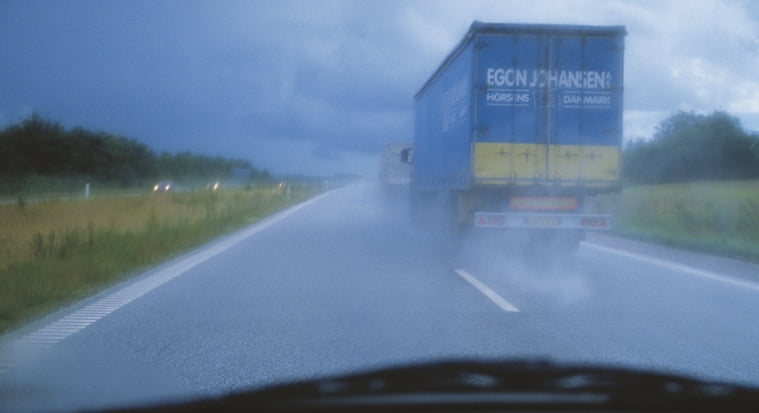
When overtaking a truck on a wet carriageway, you may experience water spraying up. This interferes with driving and reduces your visibility. Overtaking a
A lorry can also cause turbulence. In both cases, try to keep an overview and calmly complete the overtaking manoeuvre.
Fortunately, the number of overtaking accidents is not high, but when they do happen, the accidents are usually serious due to the high speed.
It is typically the overtaken vehicle that is hit. Often it's a motorist, but cyclists are also at risk. It can also be oncoming or rear-end collisions,
that is about to overtake you that gets involved.
§ You must overtake others travelling on the left. However, if the vehicle in front is turning left or preparing to turn left, you must overtake on the right. In this situation, it is permitted to cross a continuous kerb line unless the lane to the right of the kerb line is marked as a special lane, such as a cycle lane:
- it is forbidden to overtake at junctions unless
- there are multiple lanes intended for traffic travelling in the same direction
- you are overtaking on the right past a vehicle turning left
- the intersection is controlled by traffic lights or police
- Cross traffic has unconditional right of way
- it is forbidden to overtake in front of or on a railway crossing
- the general prohibition on overtaking at junctions, on hills and on bends does not apply to overtaking two-wheeled bicycles and two-wheeled small mopeds
- On a three-lane road where traffic is not one-way, you are not allowed to use the leftmost lane, including for overtaking.
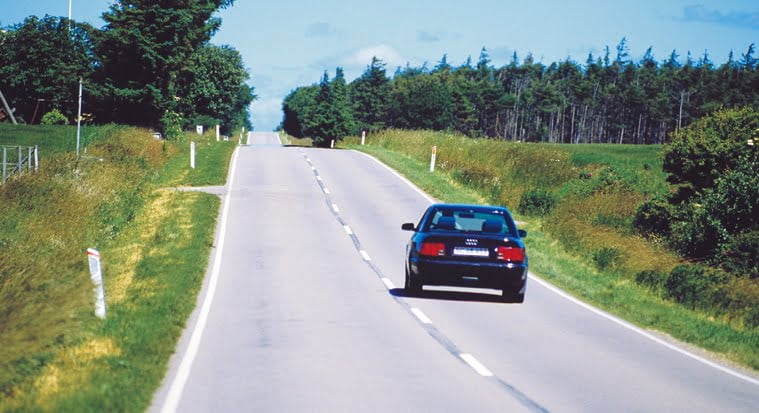
You are not allowed to overtake on a hill or on a road bend with reduced visibility. However, you may overtake on a hill or on a curve with reduced visibility if there is sufficient space within the barrier line (i.e. more space than one lane) where oncoming traffic is not allowed.
Orientation and manoeuvring
You need to learn to recognise and manage the following overtaking hazards:
- Lack of visibility for the required overtaking distance, e.g. due to hills, bends, junctions or bad weather conditions such as fog, snow or low sun.
- Oncoming traffic in the overtaking lane.
- Traffic from behind that is overtaking or about to overtake. Watch out for blind spots!
- Signs that the driver in front of you is about to overtake, stop or change their behaviour in any way.
- Signs that the driver in front of you is not paying attention to the overtaking manoeuvre. This can be shown, for example, by swerving or by the driver clearly not recognising hazards.
- Signs that the vehicle in front is having trouble manoeuvring the vehicle.
- Multiple drivers in a column with a short distance between them.
Overtaking - how to overtake
- You make sure it's safe to overtake by thoroughly orientating yourself.
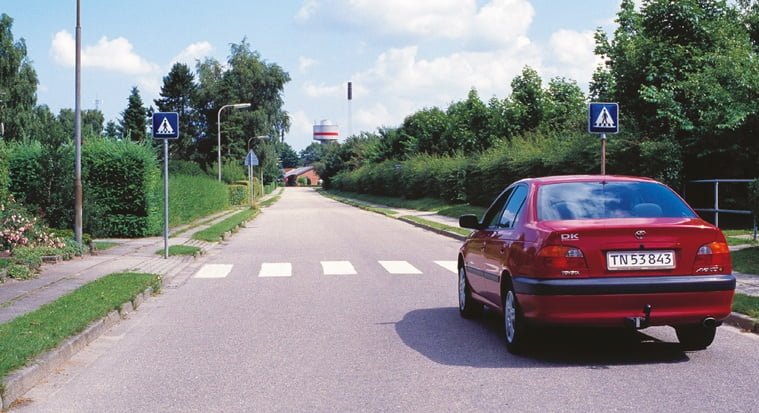
Is there enough time, overview and space?
Are there obstacles ahead?
- If others pull in front of you, increase the distance again by reducing your speed.
- Don't get too close to the person you want to overtake. If the vehicle in front of you is large and impairs your visibility, increase your distance. This will give you a better view ahead.
- Pull slightly to the left of the person you want to overtake if necessary to get a good overview.
- You need to make sure there is room to pull back into your own half of the carriageway when the overtaking is complete.
- Signal with your left turn signal if the vehicle behind you is close.
This way they will be aware of your intention. Signal if the driver in front seems inattentive or has poor visibility.
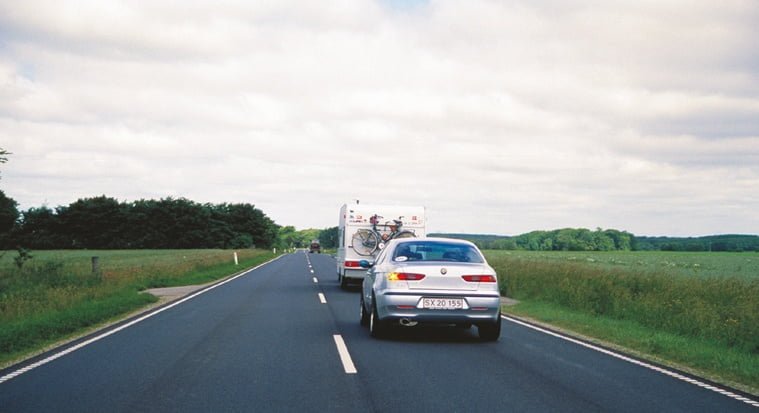
You overtake with your eyes, not your turn signal.
Be aware if someone in front of you starts overtaking.
- Throughout the overtaking manoeuvre, keep an eye on the traffic ahead and behind you. Stop overtaking if conditions change or you have any doubts.
- Get out of the driver's blind spot as quickly as possible and keep a good sideways distance.
- Keep an eye on when the person you are overtaking is visible in the car's interior mirror. Until then, stay in the overtaking lane. Afterwards, immediately pull back into the right-hand lane unless you are overtaking another vehicle.
Overtaking multiple drivers in front of you
- Before and during the overtaking manoeuvre, keep yourself informed at all times about the possibility of overtaking several drivers in quick succession legally and safely.
- Keep an eye on the nearest stop in the line of vehicles you are overtaking. You may need it if your overtaking has to be interrupted and be aware if others break out of the line to overtake as well, and if necessary, interrupt the overtaking if this results in a poorer view ahead.
Overtaking a left-turner
- Assess the possibility of overtaking on the right. Slow down or stop if necessary.
- Be aware of pedestrians and other road users crossing in front of the turning, but also keep an eye out for road users on your right-hand side of the road.
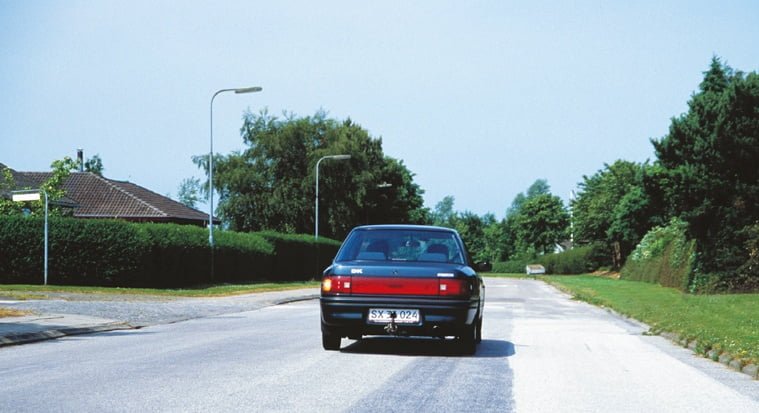
Overtake appropriately slowly and with good lateral distance.
- Do not cross the hard shoulder when overtaking. The hard shoulder is often used where overtaking is prohibited due to poor visibility, such as hills and bends in the road. In these places, however, overtaking is permitted if there is enough space within the exclusion line in the direction of travel and if oncoming traffic is not allowed.
10. Driving in traffic sanitised areas
Risks and accidents
A traffic calming area is an area with speed calming, pedestrianised streets and recreational and play areas.
Pedestrians and especially children at play are not always aware of traffic and therefore pose risks that you need to take into account. This applies both in recreational and play areas, but also in pedestrianised streets.
Finally, be aware of and respect bumps and other obstacles that are there to slow you down.
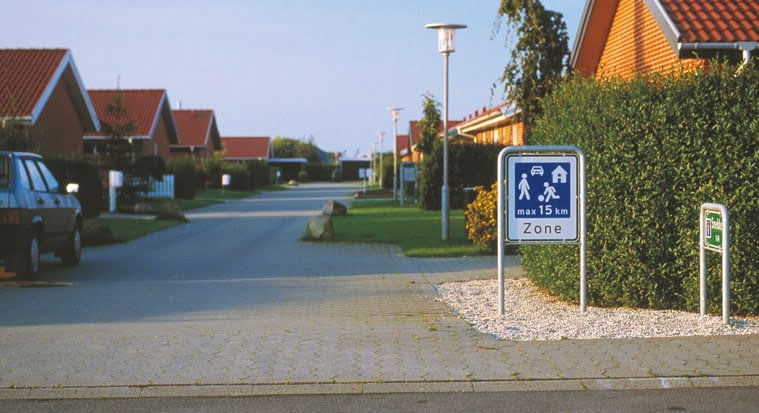
Children (and adults) consider play and recreation areas to be "safe" places in traffic and therefore pay less attention.
Be careful when driving - give way to pedestrians - and make sure those playing on the road have seen you and give way.
§ When driving in a recreational or play area, you must yield to pedestrians and never continue driving until you've ensured that no one can get dangerously close to the car. You also need to make sure that anyone staying or playing on the road has seen the car and given way to it. If you're driving in a pedestrianised area, be especially considerate of pedestrians. If you can see that some of the people travelling on the road cannot avoid getting close enough to the car to create a hazard, make sure they have seen the car. Stop if it's safer to do so.
Orientation and manoeuvring
Driving in traffic sanitised areas:
- Here's how - pay special attention to children walking and playing.
- Drive at the permitted, low speed and slow down for bumps and speed reduction devices.
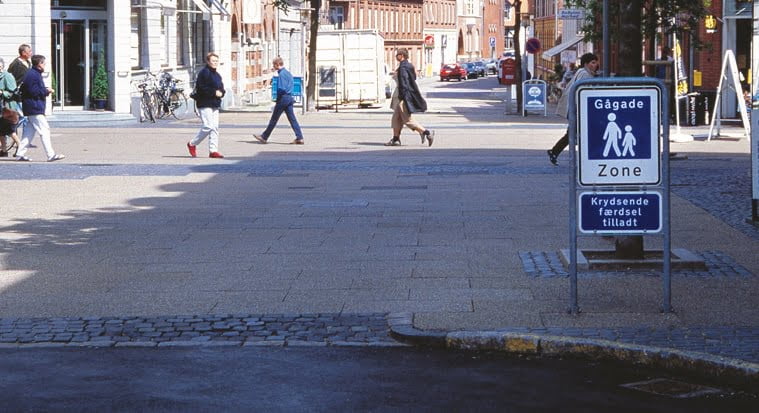
If you're crossing a pedestrianised street, you must give way to any pedestrians.
Test your knowledge
Cat. B - Sections 7.6 - 7.10
Select the questions you think are the right ones.
